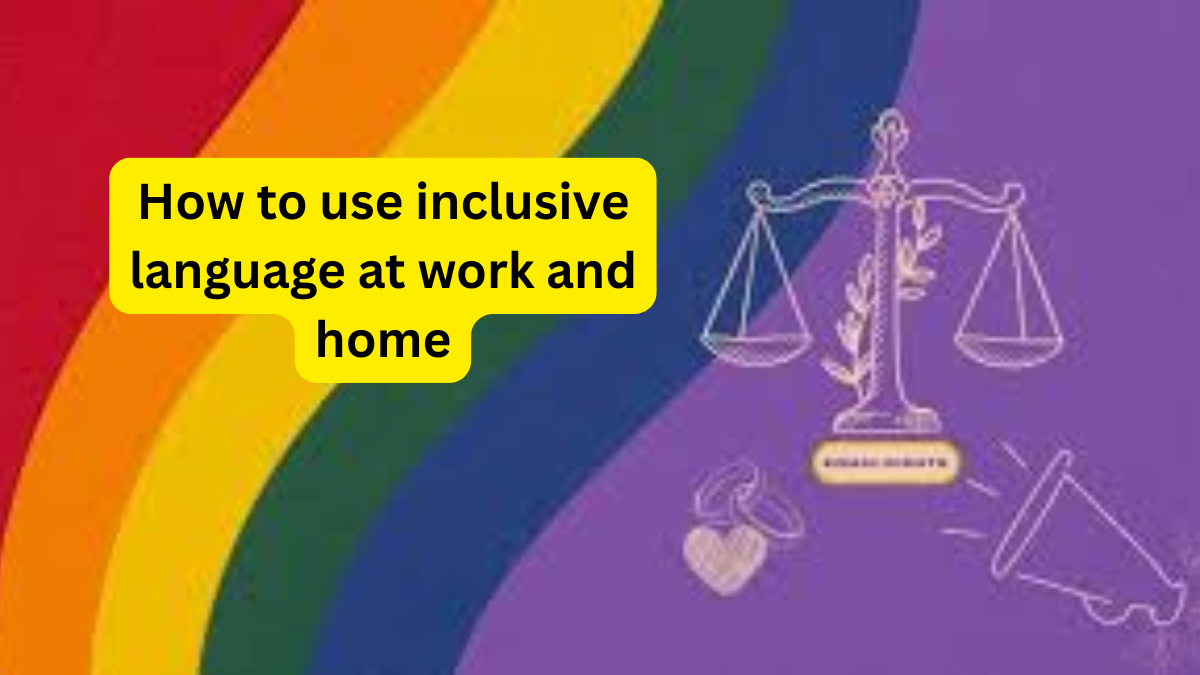How to use inclusive language at work and home : Inclusive language is the practice of choosing words and phrases that respect and value all people, avoiding expressions that stereotype, exclude, or demean.
How to Use Inclusive Language at Work and Home: A Practical Guide
Inclusive language is the practice of choosing words and phrases that respect and value all people, avoiding expressions that stereotype, exclude, or demean. It’s a powerful tool for fostering belonging, whether in a professional setting or within your family. This guide provides actionable how to use inclusive language at work and home examples and principles you can apply immediately to communicate more respectfully and effectively.
What is Inclusive Language in Writing and Speaking?
Before diving into examples, it’s crucial to understand the core principle. What is inclusive language in writing and speech? It’s communication that is intentionally free from biases, slang, or expressions that perpetuate discrimination based on race, gender, disability, age, sexual orientation, or other characteristics. The goal is to focus on person-first language that acknowledges everyone’s humanity.
The Foundation of Inclusive Language in English
Mastering inclusive language in English starts with a few key shifts:
- Use Gender-Neutral Terms: Opt for “they/them” when unsure of someone’s pronouns, and use terms like “chairperson,” “flight attendant,” or “humankind.”
- Avoid Ableist Language: Replace phrases like “that’s crazy” or “turning a blind eye” with more precise, neutral terms like “that’s surprising” or “ignoring.”
- Focus on People, Not Assumptions: Instead of “fireman,” say “firefighter.” Instead of “the disabled,” say “people with disabilities.”
Practical Inclusive Language Examples for Daily Use
Let’s translate these principles into real-world applications. Here are actionable inclusive language examples across different contexts.
Examples of Inclusive Language in the Workplace
Creating an inclusive professional environment starts with communication. Here are key areas to focus on.
Inclusive Language LGBTQ+
- Introduce Yourself with Pronouns: In meetings or email signatures, share your own (e.g., “Hi, I’m Alex, and I use she/her pronouns”). This normalizes the practice for transgender and non-binary colleagues.
- Use Correct Pronouns and Names: Always use the name and pronouns a person asks you to use. If you make a mistake, apologize briefly, correct yourself, and move on.
- Avoid Gendered Assumptions: Instead of “ladies and gentlemen,” use “team,” “everyone,” or “folks.” Use “partner” or “spouse” instead of “husband/wife.”
Inclusive Language for Disabilities
- Use Person-First Language: Refer to “a person with a disability” or “an employee who uses a wheelchair” rather than defining them by their condition (“the disabled,” “the wheelchair-bound”).
- Eliminate Ableist Vocabulary: Replace terms rooted in disability with neutral alternatives.
- Instead of “crazy,” “insane,” or “lame,” use “unbelievable,” “intense,” or “unfortunate.”
- Instead of “fell on deaf ears,” say “they didn’t listen.”
Inclusive Language Sentence Examples
Seeing direct comparisons can make the shift clearer.
- Instead of: “We need a chairman for the committee.”
Use: “We need a chairperson (or simply ‘chair’) for the committee.” - Instead of: “Hey guys, let’s get started.”
Use: “Hello everyone, let’s get started.” or “Team, let’s begin.” - Instead of: “He’s bipolar.”
Use: “He is a person living with bipolar disorder.”
A Step-by-Step Guide to Implementing Inclusive Language
Changing lifelong speech habits is a process. Follow these steps to make it manageable.
- Self-Educate and Reflect: Actively research inclusive terms and notice your own language. What outdated phrases do you use without thinking?
- Practice and Replace: Choose one area to focus on each week (e.g., removing “guys” or ableist language). Practice the alternative phrases aloud.
- Listen and Learn: Pay attention to how diverse communities refer to themselves. If you hear a colleague’s preferred term, adopt it immediately.
- Be Open to Correction: If someone corrects your language, thank them. They are giving you the gift of learning. Don’t get defensive.
- Integrate into Templates: Update email templates, HR documents, and marketing materials to reflect inclusive terminology.
Frequently Asked Questions (FAQ)
Q1: Isn’t this just political correctness?
A: Inclusive language is about respect and effectiveness, not politics. It ensures everyone feels seen, heard, and valued, which leads to better collaboration and stronger relationships.
Q2: What if I’m afraid of making a mistake?
A: Mistakes are part of the learning process. The intent to be respectful is what matters most. A sincere apology and a commitment to do better are always the right response.
Q3: How do I handle a situation where a coworker is using non-inclusive language?
A: If you feel comfortable, pull them aside privately and gently correct them. You could say, “I’ve learned that the more inclusive term for that is X. I thought you’d want to know.”
Q4: Does inclusive language change over time?
A: Yes, language evolves. A term that was acceptable a decade ago may not be today. The key is to stay curious and committed to continuous learning.
Q5: Where can I find more official resources?
A: Excellent resources include:
Start Your Journey Toward Inclusive Communication Today
Adopting inclusive language is one of the most impactful steps you can take to create environments of respect and belonging. It’s a journey of continuous learning, not perfection. We encourage you to use this guide as a starting point, share it with your colleagues and family, and commit to making one small change in your vocabulary today.
